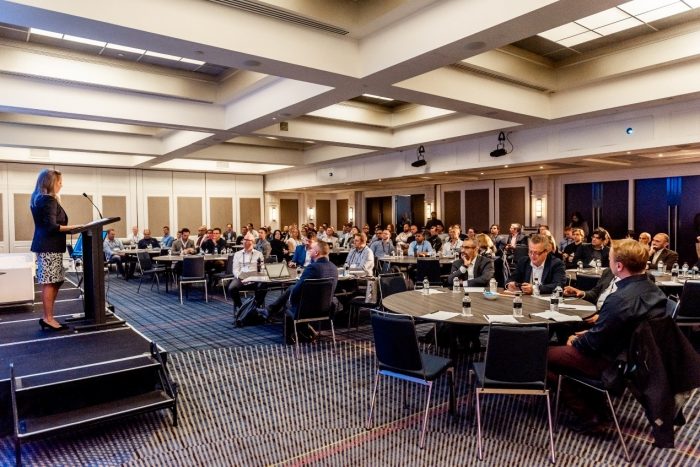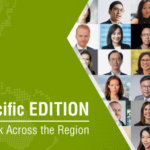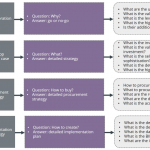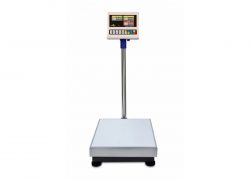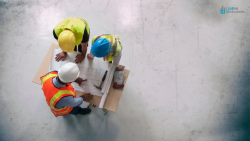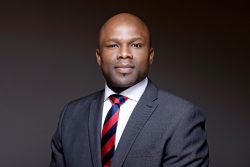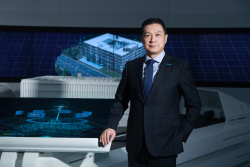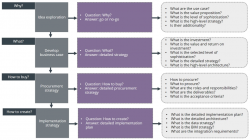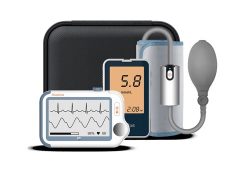Digital Built World Summit: Thinking about Digital Twins for Smart Built Environment
Digital Built World Summit, held in Sydney on 23-24 May by FuturePlace, is the world’s premier event for executives in the AEC, Smart City focused on improving digital business outcomes. It was themed on leveraging digital construction technology, including digital twins, to create a smart, responsive, sustainable and autonomous built world, which attracted over 300 attendees and presentations from over 75 leading global speakers. Various seminars took place during the summit, shedding light on developing digital twins.
Digital Twin beyond Technology
The smart building digital twin is a kind of technology, but it goes beyond that for many attending the summit.
Simon Evans, Digital Twin Leader of Arup and Chair of the Gemini Call at the National Digital Twin Programme, argued the digital twin is a methodology, not a technology. “It’s an approach of using data to get and derive better insights. It should be lots of different platforms that talk and deliver the insights that you need. … And if there is a tech piece, it is about a constellation of technologies connected; it is never gonna be one giant digital twin platform.”
He also noted digital twin transformation is a social-technical challenge that is a much wider, large-scale issue. “It is a journey, not a destination.” Technology and use cases are maturing all the time, so what a digital twin looks like today will be very different from a digital twin in the future. “So we should appreciate the journey that provides value, not focus on that unicorn, that end of the journey. It’s more about how can I get return investment now, the incremental approach,” he added.
It takes years to develop a qualified digital twin or digital twin system, and there’s a journey to get people from today to there, said David McKee, CEO of Slingshot and Co-Chair of Digital Twin Consortium. “If you think about the maturity of digital twins, you start with models of simulation to say this is what we gonna build. It’s not a digital twin. … as you then build that layer of data, and you start having those real-time data that respond to what you required, it started to graduate to become a digital twin.”
“The idea of digital twins as a journey is important because these systems are not static. They are dynamic,” elaborated Brett Dixon, Infrastructure Group Lead of Asia Pacific at Esri, “If you’re implementing a citywide digital twin or a statewide digital twin, you’ll never get to the end because the requirements from the users will just continue to emerge and evolve over time.”
Digital twin systems need to evolve with new requirements coming along. Therefore, the frameworks and standards related need to be agile. Brett explained, “They need to encourage and continue innovation and continuous engagement with users … Otherwise, they’ll just become static and deliver no value.”
Digital Twin Needs to be Purpose-driven
Speakers repeatedly mentioned that digital twin should be purpose-driven, in other words, case-driven. “Everyone is trying to just search for some meaning or for what the digital twin can do and how we can actually articulate its benefits,” said Raj Thampuran, Managing Director of Surbana Jurong.
Paul Mullett, Group Director of Engineering and Technology at Robert Bird Group, also emphasised the point around purpose, “It sounds like a bit of a cliche. But actually, this all has to be purpose-driven, and the purpose isn’t ‘I want x/y/z sensors in my buildings so I can monitor these things. The purpose is ‘are all of my buildings more energy efficient or all of my traffic flow more freely?’ or whatever it might be. That’s the purpose.”
The purpose is crucial because it determines what you need from the digital twin and the functionality. This is one key lesson from the National Digital Twin Programme for the United Kingdom. “It determines things like the data refresh rate because not all digital twins need to be with a kind of a real-time data refresh rate. It depends on the purpose,” said Mark Enzer OBE, the Global CTO of Mott MacDonald and Head of the National Digital Twin Programme.
There is also a much broader-sensed purpose or vision. According to Mark, the built environment needs to have an explicit purpose which enables people and nature to flourish together for generations. “We reckon that connected digital twins can massively help in that, but it’s kind of starting with that endpoint in mind.”
Data Becomes More Valuable with People
“The industry captures a lot of data or static data. 96% of that data goes unused.” For Bill Harris, Business Development Director for APAC at Asite, data is the new oil. “How do we start taking that static data and combining that with operational data to then start providing value to asset whole of life? That’s the question that sits, I guess, in front of us now.”
However, Nicolas Waern, CEO and Digital Twin Evangelist of WINNIIO, argued there is a huge difference between data and oil. He thought data could be turned into value and create a lot of impact through different means, like digital twinning, forever and over and over again, unlike oil that was dug out and used once.
And data itself do not provide much value. “The data needs to be turned into information, that information is then transferred into insights, that insight needs turning to action. And that action that we need to take has to lead to an impact. I think that’s also a digital twin come in,” Nicolas added.
Glodon Vice President Pierpaolo Franco echoed this view in his speech on the topic of Data in Digital Building Platform, saying accurate and real-time data play a crucial role in the building life cycle.
On the other hand, Paul Mullett placed importance on people. “People have always been more valuable than oil. People will remain more valuable than data. And actually, at the heart of all of this are people and their skills and no matter what you wanna do with your digital twins and what your aspirations are.” He warned that one of the biggest challenges in the industry right now is developing people’s skills.
Just as David McKee said, “data needs managed and do not collect data just for the sake of it, we need to harness that, and there is the value.”
Step by Step, Little by Little
But before cashing in the potential and opportunities, here are the challenges to creating and enabling digital twins.
“We are to move towards that type of future of multiple connected digital twins, then we’re gonna need to have some form of framework, consistency of approach to allow that connection actually to take place,” said Rory Brown, Director of Smart Places Programs at NSW Department of Planning and Environment.
Mark Enzer also mentioned that solving system-level problems and challenges relied on connecting single digital twins. And that connection is all about data sharing. “It’s about the digital twin speaking the same language, it’s about securely resilient information flow across organisational and sector boundaries.” Equally important for him is the standards and guidance generated bottom-up by people learning by doing and then progressing by sharing.
Brett agreed that the main challenges confronting digital twin projects are people and organisational ones. He noted that the path to success must address the people issues, the organisational challenges, the technology and data integration. The focus on the technology will likely lead to failure. Organisations need to think about being dynamic to engage users, and a coalition of the willing should be formed to bring people in and motivate them to work towards a common vision which also needs strong leadership.
None of these can be done overnight. ” I t’s, not just digital twins, but all big IT projects are risky,” Damien Cutcliffe, Director of Business Development and Growth, Digital at WSP , made another point, ” If you try to make it perfect upfront, and you hold back on, a sort of exposing that, sometimes you lose advocacy and support. So it’s trying not to overdo it at the beginning of things important.”
This is agreed by CEO and Founder of BE-WISE Cristina Savian, who said implementation of digital twins at an early stage could easily fail because of trying to do too much, trying to tackle too many cases and trying everything too much at the same time.
A suggestion can be taken from Paul, “Don’t be overwhelmed. Take a step at a time. Don’t try digital twins on the whole planet. You don’t need to. Focus on clear objectives where you want to get to, look at your people and collaborators, and take step by step.”
